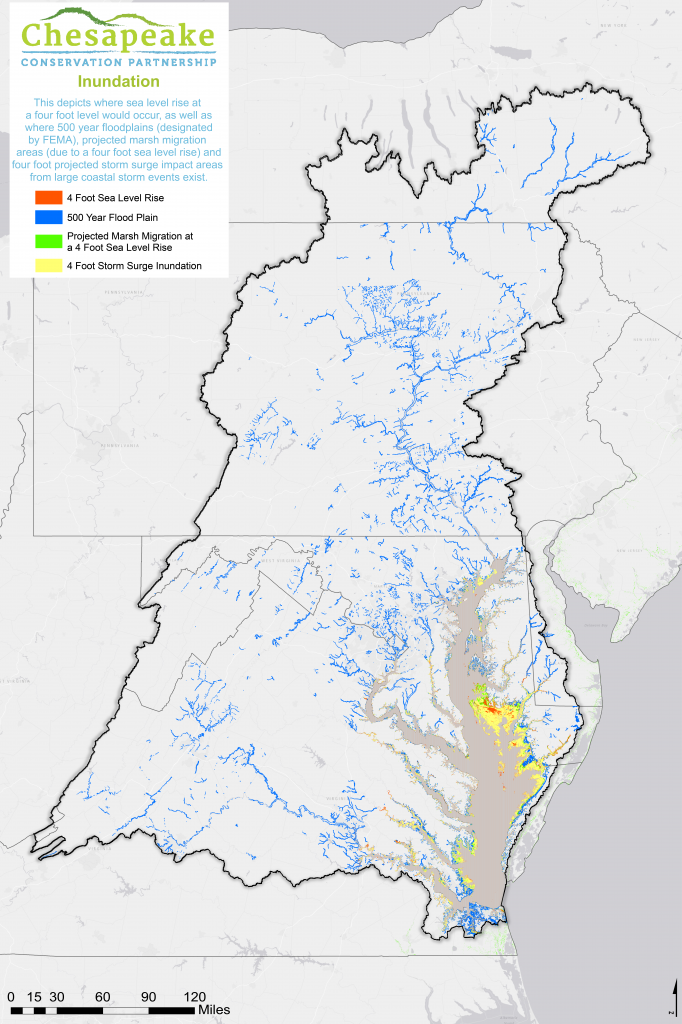A changing climate can have a wide range of impacts on the Chesapeake landscape. Among them are inundation and flooding associated with long-term sea level rise, changing rainfall regimes, and the impacts of major storms.
In 2003, storm surge from Hurricane Isabel caused $1.2 billion (2017 USD) in damage in Maryland and the District of Columbia alone. Tropical Storm Lee created extensive flooding along the Susquehanna in 2011. Portions of lowlying cities like Norfolk and Annapolis now flood on a regular basis. Projected sea level rise will have substantial impacts to portions of the Eastern Shore.
The known and projected areas of inundation can and should influence conservation. On the one hand, investing conservation dollars in flood-prone locations may seem like a questionable investment. On the other, conserving locations that will allow for the upstream migration of wetlands and marshes can provide significant benefits.
This map incorporates four aspects of inundation, three of which primarily apply to coastal areas of the watershed and one that is watershed-wide:
- Projected Inundation from Sea Level Rise: We use a mid-range projection of 4 feet of sea level rise by 2050 in this map, based on NOAA data. (The low and high range projections are 1 and 5 feet, respectively). Note that by 2100 the mid-range projection is for 5 feet of sea level rise.
- Projected Marsh Migration Areas: Using sea level rise projections and existing land-cover data, NOAA has calculated optimal areas for allowing upward marsh migration to support natural systems. These areas are potential conservation opportunities.
- Projected Storm Surge Impact Areas: This shows coastal areas projected to be inundated during storm surge events based on a 4-foot surge, comparable to a Category 1 storm. This uses the NOAA SLOSH model for these calculations.
- 500 Year Floodplain: This watershed-wide data comes from FEMA to indicates areas likely subject to “500 year floods”. These floodplains indicate areas of increased vulnerability to historic scale flood events.
For more information and to explore the map featured below further, please visit https://www.landscope.org/chesapeake/chesapeake_map_layers/threats/chpk_inundation/27790/


